Charles Frederick William Grover-Williams
Nickname: Williams
born 16 January 1903 -
died 19??) was a
Grand Prix motor racing driver and war hero.
Born to an English father and a French mother in the Montrouge suburb of Paris, France, Grover-Williams grew up fluent in both the French and English languages.
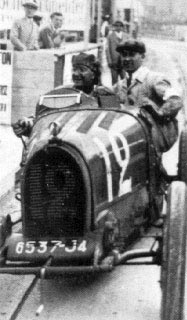 When World War I broke out, his family moved to Monaco where he got a job as a chauffeur. Mechanically inclined, and fascinated by motorized vehicles, Charles Frederick William Grover-Williams bought a motorcycle and began racing. Returning to Paris, in 1919 he worked as the chauffeur for the famous Irish war artist, Sir William Orpen. When World War I broke out, his family moved to Monaco where he got a job as a chauffeur. Mechanically inclined, and fascinated by motorized vehicles, Charles Frederick William Grover-Williams bought a motorcycle and began racing. Returning to Paris, in 1919 he worked as the chauffeur for the famous Irish war artist, Sir William Orpen.
Racing career
By 1926, Williams had begun racing a Bugatti in races throughout France, entering the Grand Prix de Provence at Miramas and the Monte Carlo Rally. In 1928 he won the French Grand Prix, repeating in 1929. That same year, driving a Bugatti 35B, painted in what would become known as British racing green, he won the inaugural Monaco Grand Prix beating the heavily favored Mercedes of the great German driver, Rudolf Caracciola.
Willi and mechanic after Monaco win
In November 1929, Williams married Yvonne Aubicq, whom he had met when chauffeuring the two around Paris. Successful financially, they maintained a home in a fashionable district of Paris while owning a large house in the resort town of La Baule, Pays de la Loire, on the Bay of Biscay, which was home to one of the annual Grand Prix races. In 1931 he won the Belgian Grand Prix and the Grand Prix de la Baule three consecutive years (1931 to 1933). Then his career waned and he was out of racing by the latter part of the 1930s.
World War II
Following the Nazi occupation of France in World War II, Williams fled to England where he joined the Royal Army Service Corps. Due to his fluency in French and English he was recruited into the Special Operations Executive (SOE) to foster the French Resistance. He recruited fellow racing driver Robert Benoist and together they worked in the Paris region to build up a successful circuit of operatives, forming sabotage cells and reception committees for parachute operations.
In June 1943, Williams was arrested by the SD and underwent lengthy interrogation before being deported to Berlin and was then held prisoner in the Sachsenhausen concentration camp. In the cell where he was held prisoner there is a commemorative plaque of his execution.
Posthumous
He was believed to have been executed in the spring of 1945 along with Francis Suttill, another important SOE network leader. However, in light of further evidence, since the British Government released files in 2003, it is now believed that Grover-Williams may have survived the war, and lived on under an assumed identity.
In March 1947 MI6 sent a message from Berlin to SOE asking for help in relocating a Bugatti racing driver by the name of 'Grover-Williams' to the USA. A short while later a strange man arrived at the home of Grover-Williams' presumed widow, Yvonne, with the name Georges Tambal. He and Yvonne lived together for many years, claiming to be cousins (locals suggested the two acted more like lovers).
On arrival back in France 'Tambal' had with him 2 giraffes for the zoo, which he claimed to have gotten in Uganda. In fact Grover-Williams had relatives in the USA and a sister in Uganda. 'Tambal' also apparently had a huge knowledge of cars (as did Grover-Williams) and shared Grover-Williams' birth date. It seems the two men may have been one.
Source Wikipedia, the free encyclopedia |
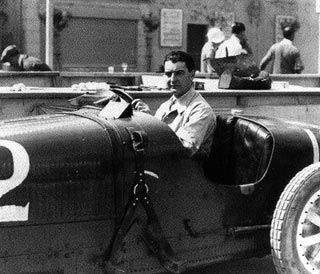
Before the start in Monaco
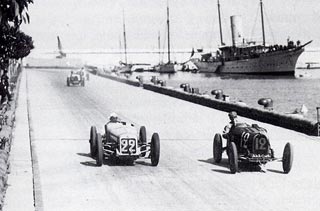
1929 along the quays 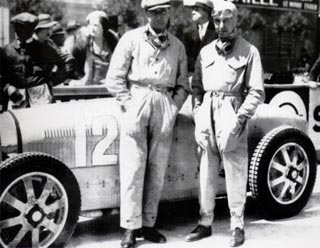
1929 posing with Rene Dreyfus
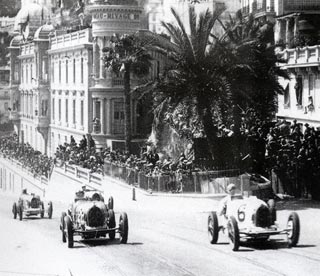
1930 climbing the hill of Beaurivage
|